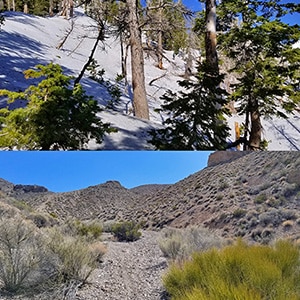How Much Water Do You Need to Bring on Your Adventure?
Questions about temperature naturally lead to questions about need for water. Ironically, the more water you carry, the more you will need due to hauling that additional weight. So the goal is to find that golden balance where you have enough water plus some extra to cover unexpected delays such as injury or getting off course, however, you’re not hauling too much additional water that adds unnecessary weight and exertion.
Here are some considerations around the amount of water you will need:
- Temperature: As temperatures rise into the 90s and 100s the air you breathe is like the air in your clothing dryer…drying out your lungs and body with each breath. Note that as the temperature increases your water need may increase faster. For example, the increase in water need between 70 and 80 degrees is not rapid as the increase in water need between 100 and 110 degrees.
- Your Body Weight: The percent of your weight above your ideal body weight will add to your water need.
- Total Distance You Will Cover: Percent increase in distance will require a similar percent increase in water need.
- Terrain Difficulty: The more ascent plus increased angle of ascent will increase water need.
- Time Spent in Your Adventure: As your total time increases, the water you need to bring increases.
- Your Level of Conditioning: Greater conditioning translates into less exertion, all other factors being equal, which translates into lower water need.
Determining Your Water Need
- Develop Your Water Need Baseline: Be aware of how much water you need to carry per mile on a relatively easy 2-5 mile adventure at about 80 degrees.
- Increase Your Water Supply Accordingly: As the factors noted above indicate
Example: At my ideal weight and conditioning I consume about 5 liters of water on the 18-mile Mt. Charleston Loop (total overall elevation gain around 6000 – 7000ft).




